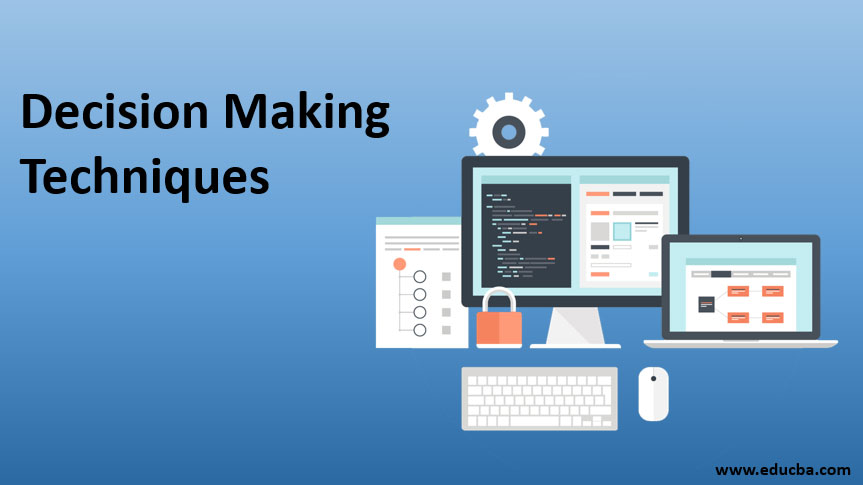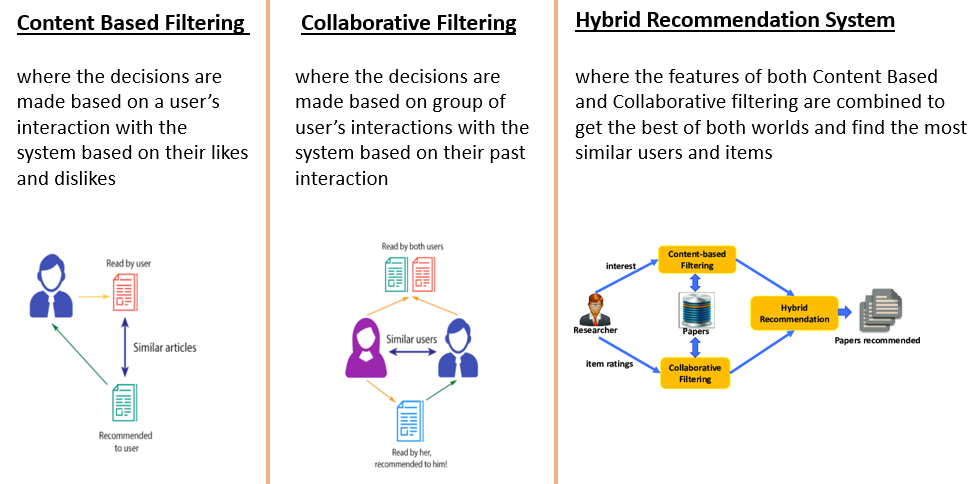
Introduction to Decision Making Techniques
- In these articles, we will learn about Decision Making Techniques. AI/ML methods can possibly be a means to an end for our Rational Decision-Making. This article is intended to provide intuition on the most popular decision-making techniques steered by AI/ML.
- Right from waking up and leaving behind the cozy bed in the morning until we retire for the day, the decisions we make are what keep us thriving. It is estimated that an average human makes around 35,000 decisions a day. Even a small decision can have a massive consequence on a set of events like stated in the very famous “butterfly effect”, where a minor change such as a butterfly flapping its wings can create a phenomenal change.
- The key to effective decision-making is to determine the possible outcomes, evaluate them to get to the best one. With the rise of AI, we are tending towards it for most of our rational decisions, be it finding the shortest route to reach work or making complex business choices. The use of AI/ML techniques for decision making allows us to find the optimum solution by trying out various possible outcomes for the problem at hand.
Top Decision-Making Techniques Using AI/ML
Decision Making is a continuous and goal-oriented process. It involves a series of actions to be performed to reach a defined target. The following techniques give solutions to modern business problems, thereby enhancing the decision-making capabilities to provide effective, cost-effective and profitable growth in any given area.
1. Recommendation Systems
Let’s take a moment to analyze our daily activities. Most of our day begins and continue to progress with our smartphones. From the news, we read to things we shop, and the watch is all recommended to us based on our past choices. In a way, the machines are making decisions on what we might be interested in. This is achieved by building a system that uses techniques as illustrated below,

2. Predictive Analytics
Predictive models are the ones that use statistics-based techniques to estimate or predict the possible outcomes given proper valid data that fills the requirements for various scenarios. A predictive model is often combined with Machine Learning algorithms to obtain an effective business outcome. This is achieved by data mining, determining the trends and patterns w.r.t the target, and applying a suitable algorithm of Classification (to predict various classes) or Regression (to predict numbers).
The use of Predictive Analysis in various industries are shown below:

3. Decision Making Based on Fuzzy Logic
The term “Fuzzy” means vague or imprecise. Many decisions we make cannot be treated as black or white; sometimes, it is necessary to explore the outcomes the grey region offers. Fuzzy logic is used to integrate a resemblance of human reasoning in machines. Fuzzy logic is often implemented with control systems to provide an acceptable real-time outcome. When teamed up with Neural networks and reinforcement techniques, fuzzy systems can be used to achieve the intellect and stability required for real-world scenarios.
Fuzzy systems have increased performance and are less sensitive towards external noise and outliers. These systems are more flexible and can contain values that represent more than two possible situations. Though fuzzy systems are not always accurate, they are more robust and find their applications in most of the household products like air conditioning, microwave ovens, washing machine, refrigerators, television and so on.
Importance of Decision Making
Below are the important points to explain Decision Making Techniques:
- It is already a known fact that each day we generate more than 2.5 quintillion bytes of data which is only rising each passing day. So, it is safe to conclude that there is no shortage of data for the “data-driven” companies. However, since most of these data are unstructured, a need arises for them to be mined, cleaned and cleansed in order to be able to extract useful information from the said data.
- The success of any business lies within the route they take to reach out to their customers and how pleased the customers are with their intended products. The use of AI and ML techniques is important for the business to understand their market and to keep the right foot forward towards innovation and effective use of the available resources.
- These techniques act as a bridge to obtain leverage over the data and make use of them for complex decision making, enabling the business to have a deeper, personal understanding of their customers, resulting in a stronger bond between them and better business opportunities to explore.
Advantages of Decision Making
Below are the advantages of Decision Making
1. Exploring More Options
With lots of data comes lots of possibilities to explore and extract useful insights from them. While this task can be tedious to humans, machines can help us achieve this. On the path to accomplishing an ideal decision, data is analyzed, studied for multiple alternatives to find solutions to the unresolved questions.
2. Time-Saving
With the growth of the digital platform, it is the need of the moment to get quick results, and this is possible with the involvement of efficient and trained machines that applies complex mathematics rules to give us the best output. With the advancements in neural networks and supercomputers, these complex algorithms are now performed in a matter of seconds to hours rather than days altogether.
3. More Accuracy and Efficiency
In addition to saving our time, AI and ML systems provide us with accurate results for our problems. This is made possible by the loads of machine acceptable data we feed into these systems, and as the time progresses with the historic data accumulated, the decisions interpreted get better and better.
4. Understanding Consumers
Retaining the consumers is as important as a task as obtaining them. The business can make use of the data they get on their consumers and can work around their existing approach and decide what’s best for both in order to be sure that their consumers are not going away any time soon.
Conclusion
Decision-Making Techniques, Decision making provides us with a glimpse of various possible alternatives so that we can make the choice of that one best decision. Lately, we have leaned on to AI to make most of the decisions for us, to help us make more precise and improved decisions. Though this is crucial for us to progress into the future, not all decisions made by machines and algorithms can replace the decisions that humans make.
The morality that is present in the human decisions is what the machine-based decisions mostly lack, not to mention the bias that they are introduced by their creator or by the data they are fed. But the scope of AI involving in our decision process is not going to be slowed down any time soon; the only way for us to evolve further is to adopt a more smart and calculative approach to improve on the decisions that are the outcomes of our actions.
Recommended Articles
This is a guide to Decision Making Techniques. Here we discuss Top Decision-Making Techniques Using AI/ML, importance with its advantages. You can also go through our other related articles to learn more –

